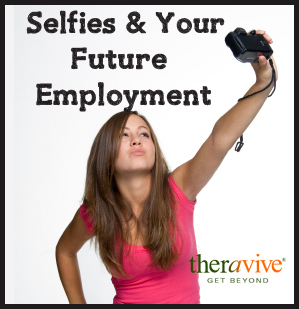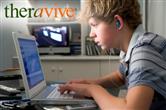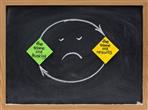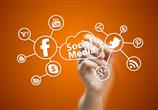Technology is not good or bad; it is just another part of life—like food and money- that we have to relate with in a conscious way. With some awareness, you will gradually find a balanced way to enjoy technology and all it has to offer, without sacrificing your health or your relationships.
[More]
What makes online dating so appealing? Well, firstly, it’s EASY! You don’t need to dress up, drive anywhere, or put much physical effort into it. And the other appeal is that it actually works.
[More]
April 3, 2014
by Caleen Martin

Chronic pain patients can and often do feel like they have no control in their lives. We have to rely on doctors, medication, tests and treatments that aren't very effective. We have to rely on family and friends who don't understand to help care for us. We have to fight with insurance companies and social assistance for disability benefits.
[More]
March 1, 2014
by Arthur Hunter

Going to that party seemed like a great idea, until a photo of you passed out of the floor was shared all over Facebook. Seemed harmless enough at the time, until a potential employer went digging through the internet to see what kind of employee you would make.
[More]
December 15, 2013
by Rose Wilson

Idyllic scenes of family and friends gathering together to celebrate abound on social media sites at this time of year, and for those who don’t necessarily have a full schedule of events to attend there seems to be a major disparity that can aggravate depression.
[More]
September 22, 2013
by Christie Hunter

Do you remember what life was like before the internet? Before social media? Was it all that bad? Here is a snapshot of Life Unplugged.
[More]
September 21, 2013
by Christie Hunter

A parent's deepest fears exposed. The Peeping Tom no longer needs to sneak outside our windows, he is IN them. There is something we can do to keep them out and our children's dignity and virtue safe from on-line harm.
[More]
July 8, 2013
by Ashley Marie

"What size? Extra large, please...
At least that’s what I would order when buying my first thinking cap – if only increasing my brainpower was that simple."
Good brains are prized commodities, as they can enhance the quality of our lives. As the most intelligent species on the planet,[1] we can think, analyze, problem-solve, invent, reflect, and create.
Most of us were not endowed with as much artistic talent as Mozart or mathematical skill as Albert Einstein. But we still have the potential to increase our brainpower.
The Obstacles
1. Culture of Ignorance
Despite our thinking potential, we are plagued by obstacles.
As pointed out by Albrecht, much of North America suffers from a culture of ignorance.[2] Critics claim the quality of education has generally decreased.
I recall the day my political science professor delivered an angry speech that shook the speakers of our lecture hall. To his dismay, our undergraduate class could barely spell, write in full sentences, form coherent thoughts, or recall notable historical moments – not to mention think critically about political events. On top of that, oversized classes and lack of funding only made matters worse.
Our generation is also blessed and cursed by advances in technology. [3] Though admirable in many respects, the Information Age is characterized by mental laziness. It is much easier to pull out my calculator than to recall my multiplication tables from grade school.
2. Instant Impatience
We live in an instant society, where we expect instant results when addressing our problems.[4] If my bike breaks down, I can easily take it to a repair shop – rather than try to fix it myself.
Expectations for instant results have made us into a highly impatient society. I recall the day when my sister and I went to Ikea, and the cash registers stopped working. People waiting in line were fuming with anger because the computer technicians took 20 minutes to solve the issue.
Working out solutions takes time, and we need to give our brains and those of others breathing room to think clearly.
3. Passive Versus Active Thinking
In our search for instant gratification, we also tend to prefer passive versus active thinking.
Since the 1960s, television has become a dominant component of North American life. But this medium encourages passive thinking. Studies have shown that after watching more than 30 minutes of television, your thinking begins to resemble a state of hypnosis.[5]
Though some television is more knowledge-based – such as current affairs programs, the news, or documentaries – most people prefer pure entertainment. In the US, the most-watched shows comprise largely of comedies, dramas, thrillers, and reality television.[6] In the 2012-2013 TV season, Sunday Night Football, The Big Bang Theory, and American Idol were some of the most popular shows.
4. Thinking With Emotion
Emotions also blur our capacity to think rationally and reasonably.
In a fascinating study, Westen combined psychology and cognitive neuroscience to analyze how Democrats and Republicans interpret political candidates’ speeches, campaign ads, and arguments in debates.[7] His research reveals that we are wired to think with our guts more than sound logic. This means politicians are able to manipulate our emotions without us realizing that our votes are often irrational.
Note that the power of emotion to trump logic is not a recent phenomenon. Even in Ancient Greece, Plato noted an imbalance between emotion and reason. [8]
The Potential
Despite these obstacles to enhancing our brainpower, our minds have great potential.
According to Minirth, we typically use only 5% of our mental capacity.[9] However, we can wire our brains to access the other 95%.
We can learn to solve complex mathematical problems, envision social change, create artistic masterpieces, communicate profound wisdom, and, most importantly for readers of this blog, provide state of the art therapy to those seeking counseling.
There are tools and tips on how to unlock the genius in you. And this is what this series of articles will explore.
[1] 2010. Mammal Anatomy: An Illustrated Guide. Tarrytown, NY: Marshall Cavendish.
[2] Albrecht, K. 1980. Brain Power: Learn to Improve Your Thinking Skills. New York: Firseide, pp. 1-2.
[3] Ibid.
[4] Ibid.
[5] Albrecht, K. 1980. Brain Power: Learn to Improve Your Thinking Skills. New York: Firseide, pp. 5.
[6] Schneider, M. 2013. “America’s Most Watched: The Top 25 Shows of the 2012-2013 TV Season.” TV Guide. [online] Available at: < http://www.tvguide.com/news/most-watched-tv-shows-top-25-2012-2013-1066503.aspx> [Accessed 7 July 2013].
[7] Westen, D. 2007. Political Brain: The Role of Emotion in Deciding the Fate of the Nation. New York: Perseus Books.
[8] Ibid, pp. 63.
[9] Minirth, F.B. 2007. A Brilliant Mind: Proven Ways to Increase Your Brainpower. Grand Rapids, MI: Baker Publishing Group, pp. 1
Networking has a new meaning in today's job market...
The Past
In the past, some of the best insight into whether a person would be a good fit for a company has been personal interviews, positive personal references, IQ tests, and personality testing. In our technologically changing world, there are new ways to gather this sort of information. Social networking, data-mining, and even games and videos can be used to collect information about how people deal with various situations, how they multi-task, and even, to some degree, intelligence. [1]
The Present
The most popular vehicle for employers to seek insight into a candidate has been the professional networking site, LinkedIn. According to an article written by Tomas Chamorro-Premuzic and Christopher Steinmetz, LinkedIn offers the professional the personal reference through its use of the “Endorsements” feature. An employer looking for a candidate can now see the resume, and references, as well as interests before making contact with the candidate. This saves time in the hiring process. A 2012 study by psychologists Jamie Guillory and Jeffery Hancock at Cornell University found that public resumes on LinkedIn foster more honesty with regard to work experience than the tradition paper resume, because it is public, and can more easily be called to question by family and friends. However, interests or hobbies that are not known as objectively were not as honest.
In addition to LinkedIn, there are several other ways an employer can seek information about a person. Looking at blogs, Facebook, and Twitter give a glimpse into a person’s character and interests, but can also create a bias based on looks, or interests that would not matter in the work environment, and would not come up in a face to face interview.
The Future?
New technology could take the social networking we currently use even further with data mining. Data mining is software used to derive insight to make evidenced-based decisions. Companies such as TweetPsych and YouAreWhatYouLike use Twitter and Facebook to create a personality profile for an individual based on the individual’s activity on those social networks with amazing accuracy. Psychologist Michal Kosinski of the University of Cambridge published an analysis suggesting that the accuracy is greater than 75% for predicting gender, sexual orientation, religion, and political preference. While the percentage is lower for personality traits and intelligence, it is still significantly accurate in estimating IQ and personality. [2]
Another tool for networking is a video offered by companies like EnRecruit and Spark Hire, which asks candidates questions on video, and employers can evaluate their responses in private. This offers a time savings, and a standardized interviewing process.
Additionally, gaming can also predict character traits through situational behavior. This engaging innovation allows a candidate to play a game that analyses their choices and categorizes job skills and personality traits. The company, Knack, bases personality profiles on research from behavioral scientists who have mapped certain responses in the game with job skills. As an example, the game “Wasabi Waiter” can measure many skills such as the ability to multi-task, and remember details.
Reckitt Benckiser, a multinational consumer goods company, uses the game “Insanely Driven” to profile personality. Players must handle tough situations in a race that measures personality, ambition, sensitivity, and prudence. This game bases assessment on the five-factor model Hogan Personality Inventory.
L’Oreal uses the game “Reveal” for its cosmetics company. This game is used to discover people based on the qualities such as Risk taking, analytical skills, and more.
Additionally, there are databases that can assess what people are saying about an individual. These sites like Topsy and Klout can be used to see an individual’s influence on the world.
Can This Innovation Shape the Job Market?
There are pros and cons to all of this new technology. On one hand, employers can save time scheduling, and sifting through papers to find the perfect fit for their company. Candidates can avoid some of the anxiety of interviews, and loss of self-esteem from rejections. It streamlines the process of hiring, while making it a bit more evidence based.
On the other hand, it also requires a loss of privacy for the person looking for a job. Companies would need access to the information that is normally private or protected by password. Another problem with the new technology is that people are not willing to give up that privacy in an age so tight on security. It also tends to limit the human contact even further than we have already in our gadget run world.
Whether a job seeker wants to use the old resume and cover letter, or cutting edge new networking innovations, a career counselor can help research the best career match, based on a person’s individual qualities, and skills, as well as aid in finding the right tools for the job search in our ever changing job market.
________________________________________________________________
[1] Chamorro-Premuzic, Tomas, and Christopher Steinmetz. "The Perfect Hire." Scientific American Mind July-Aug. 2013: 43-47.
[2] Kosinski, Michael, David Stillwell, and Thore Graepel. "Private Traits and Attributes Are Predictable from Digital Records of Human Behavior." Private Traits and Attributes Are Predictable from Digital Records of Human Behavior. PNAS, 11 Mar. 2013. Web. 06 July 2013.
July 1, 2013
by Ashley Marie

There is a lot of hype about social media, and I understand its advantages. I have a network of friends across the globe that I can tap into within seconds. I can Skype my sister in California, Facebook my friend in New York, Tweet to my former classmate in London, and comment on my boyfriend’s Instagram photo taken in Winnipeg – all with very little effort.
The Dawn of Social Media
This digital connectivity is a historically recent phenomenon.
Its beginnings trace back to 1991, when Tim Berners-Lee connected hypertext technology with the Internet, leading to the creation of the World Wide Web.[1] Soon, email replaced snail mail and weblogs replaced printed diaries and journals. New communities formed online, creating alternate means of social interaction.
A decade later, Web 2.0, a term coined by Darcy DiNucci,[2] shifted the dynamics of virtual communities. Instead of only allowing Internet users to passively read online content, Web 2.0 now permitted individuals to actively interact as creators of user-generated content. Today, social media outlets – such as Facebook, Twitter, Google+, LinkedIn, and Skype – form a large part of social interactions.
How Social is Social Media?
We have witnessed a series of technological breakthroughs, but has there been a corresponding social breakthrough? Has social media contributed to us becoming more social?
Proponents of social media suggest that it has enhanced our relationships. Rainie et al., for instance, claim that individuals should not fear the Internet; rather, if they learn how to network effectively online, they can benefit from endless possibilities to offer support, exchange information, and converse with people all across the globe.[3]
But while online communities can produce a greater quantity of personal contacts, they tend to diminish the quality of interactions.
Malcolm Gladwell is critical of the laziness that social media encourages. He argues that it is so easy for people to participate in social networks that they end up devoting less time and energy to their interactions with others.[4]
Social media eases connectivity, but connectivity is not the same as connection. I can instant message my father in Guadalajara, but our online conversation will only scratch the surface of a deep father-daughter connection.
The bases of profound relationships – such as trust, commitment, and compatibility – are difficult to strengthen via pixels on sleek displays, no matter how aesthetically appealing and user-friendly they might look.
As pointed out by Monserrat, a person's tone of voice and body language is essential to forming strong relationships.[5] It is easy to ‘like’ a friend’s Facebook photo, but it takes more time and involvement to show someone that you sincerely care about their well-being.
Some interactions on social media can even produce anti-social behaviours.
A survey conducted by VitalSmart revealed that 1 in 5 individuals has blocked, unsubscribed, or unfriended someone else due to an online quarrel.[6] In other words, bullying, rudeness, and disrespect have permeated a medium intended to foster favorable social interactions.
Therapists: Listening Ears to Deaf Crowds
Means of communication are changing quickly, and therapists should reflect on how to respond to this new age of hyper-interconnectivity. They should not fear social media, but they should understand its strengths and weaknesses.
Participating in online networks can help build a therapist’s practice, allow for up-to-date exchanges of information, as well as produce healthy dialogues about mental health issues.
However, therapists should also recognize that – perhaps more than ever – they have unique contribution to make to the quality of people’s lives.
Fast-paced lifestyles combined with superficial virtual communities can produce social alienation, causing many to disconnect from others and even from themselves.
For some, a therapist might be the only person who can offer a full hour of their time to listen to their story, provide helpful insights, and encourage them along their journey – all without the interruption of Tweets, Facebook messages, Instagram photos, and LinkedIn updates.
Therapists offer a breath of fresh air in a world polluted by restless online hyperactivity.
[1] Van Dijck, J. 2013. The Culture of Connectivity: A Critical History of Social Media. New York: Oxford UP, pp 5.
[2] DiNucci, D. 1999. Fragmented Future, Print Magazine. pp 32, 221-2.
[3] Rainie, H., L. Rainie, and B. Vellman. 2012. Networked: The New Social Operating System. Cambridge, MA: MIT Press, pp. 255.
[4] Gladwell, M. Small Change, The New Yorker, [online] Available at:
<http://www.newyorker.com/reporting/2010/10/04/101004 fa_fact_gladwell> [Accessed 30 June 2013].
[5] Monserrat, A. Leadership Means Face-to-Face, Not Facebook, Forbes, [online] Available at: < http://www.forbes.com/sites/forbesleadershipforum/2011/ 08/29/the-social-media-fallacy-real-leadership-means-face-to-face-not-facebook/> [Accessed 30 June 2013].
[6] People more likely to be rude on social media; affects friendships in real life. Daily News, 10 April 2013. [online] Available at: <http://www.nydailynews.com/life-style/friendships-cut-short-social-media-article-1.1312747#ixzz2XjSTFeew> [Accessed on 30 June 2013].